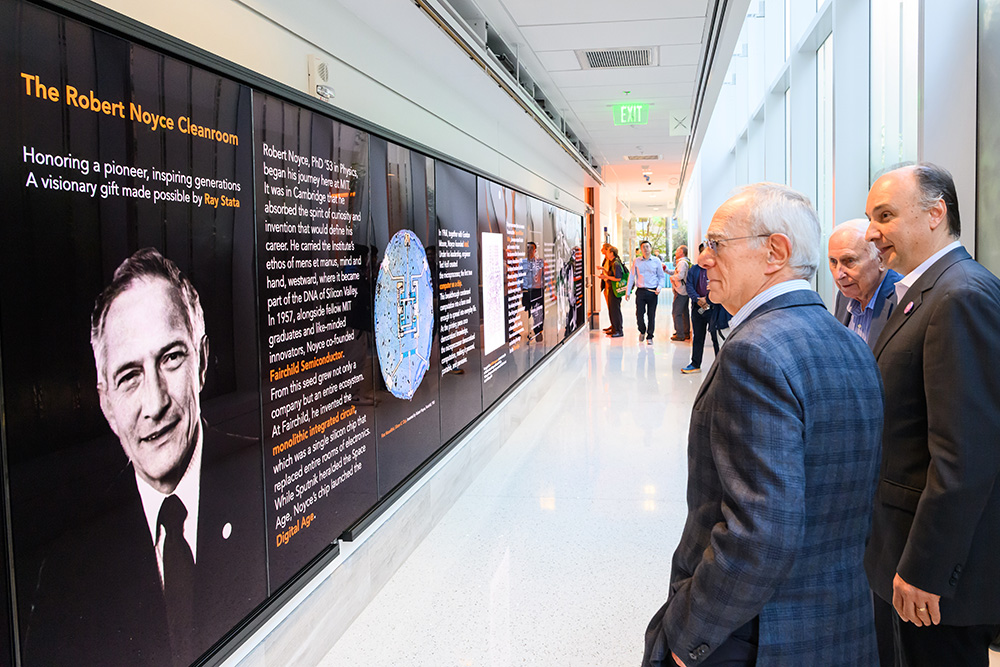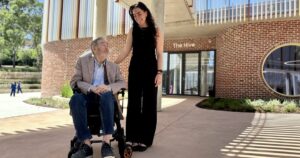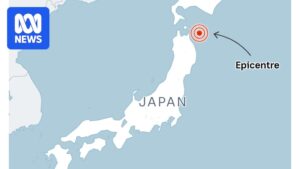
Nikon Z9 Camera
“MIT.nano is essential to making progress in high-priority areas where I believe that MIT has a responsibility to lead,” declared MIT President Sally Kornbluth at the 2025 Nano Summit. Her remarks set the tone for a daylong event that underscored the transformative potential of nanoscience and nanotechnology in addressing some of the world’s most pressing challenges.
The summit, hosted by MIT.nano, focused on MIT’s special initiatives in health, manufacturing, and climate change—domains where the institute aims to make a significant impact. The discussions revolved around the themes of cross-disciplinary collaboration, scalable solutions, and leveraging nanoscale science for large-scale change.
Collaborating on Health
Angela Koehler, faculty director of the MIT Health and Life Sciences Collaborative, opened the health session by posing a critical question: How can MIT build a community to tackle transformative problems in human health? The session featured pioneering work in medicine, including Ana Jaklenec’s research on single-injection vaccines. Her team adapted techniques from electrical engineering to create tiny, multi-component devices for the pharmaceutical industry.
Giovanni Traverso, a gastroenterologist and mechanical engineering professor, drew inspiration from nature, studying squids and remoras to design innovative drug delivery systems. Meanwhile, Jagesh Shah from Mirai Bio discussed precision-targeted lipid nanoparticles for therapeutic delivery, highlighting the importance of collaboration between academia and industry to drive meaningful impact.
Manufacturing: From Classroom to Workforce
The second session spotlighted MIT’s Initiative for New Manufacturing (MIT INM), emphasizing the institute’s commitment to advancing manufacturing technology and education. A. John Hart, co-director of MIT INM, stressed the importance of understanding the manufacturing landscape both domestically and globally.
Dan Oran, an MIT alumnus, shared his journey from student to entrepreneur, founding Irradiant Technologies. The session addressed the challenges of scaling innovations from prototypes to production, with Elisabeth Reynolds highlighting the need for workforce development to support this transition.
John Liu proposed a new role in advanced manufacturing—the technologist—who would bridge the gap between technicians and engineers, ensuring a seamless flow of ideas from academia to industry.
Bridging Ecosystems with Nanoscience
Benedetto Marelli, mission director for the MIT Climate Project, emphasized the interconnectedness of ecology, health, mobility, and other sectors in tackling climate change. Faculty speakers presented nanoscale solutions for climate resiliency, such as Michael Strano’s work on converting waste methane into renewable materials and Desirée Plata’s efforts in scaling carbon dioxide removal systems.
Kripa Varanasi focused on improving agricultural spraying techniques to reduce pollution and cost. The session highlighted the economic implications of climate change and the need for sustainable design to transition the global economy.
MIT.nano: A Hub for Innovation
MIT.nano serves as a collaborative hub, offering shared access facilities for researchers to develop solutions to global challenges. Jorg Scholvin, associate director for Fab.nano, showcased a diverse range of projects, from 3D transistors to art restoration, reflecting the summit’s themes of interdisciplinary collaboration and scalable innovation.
The enthusiasm of the researchers was palpable, echoing President Kornbluth’s opening remarks about the potential for nanoscience to inspire groundbreaking solutions. “The solutions to the problems we heard about today may come from inventions that don’t exist yet,” noted Michael Strano.
Honoring Visionaries: The Robert N. Noyce Cleanroom
The summit concluded with a tribute to the pioneers of nanoscience and nanotechnology. President Emeritus L. Rafael Reif announced the dedication of the Robert N. Noyce Cleanroom, made possible by a gift from Ray Stata. This 45,000-square-foot facility will honor Noyce’s legacy as a semiconductor industry pioneer.
Ray Stata, co-founder of Analog Devices, praised Noyce’s contributions, noting, “It is an honor to name the MIT.nano cleanroom after Bob Noyce, creating a permanent tribute to his vision and accomplishments.”
Reif highlighted the role of MIT alumni in shaping the semiconductor industry, including Lisa Su, for whom Building 12 is named. “With the Robert Noyce Cleanroom, MIT is poised to continue leading in nano discoveries and nurturing the next generation of nano leaders,” he concluded, signaling a bright future for MIT.nano and its community.







